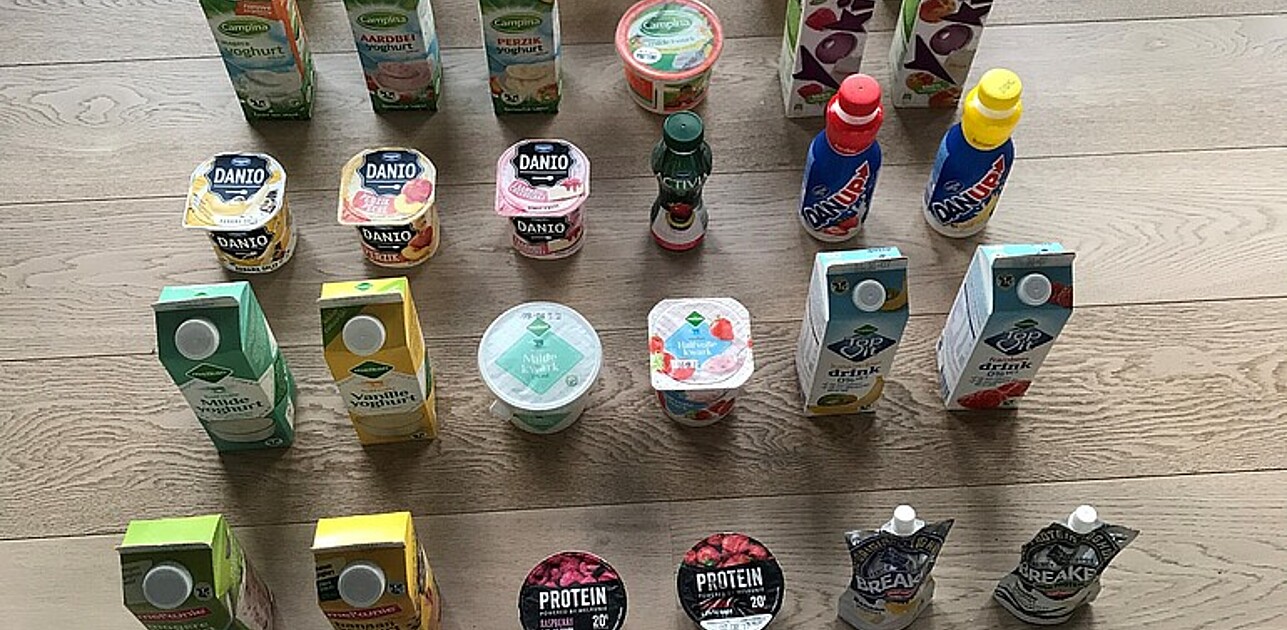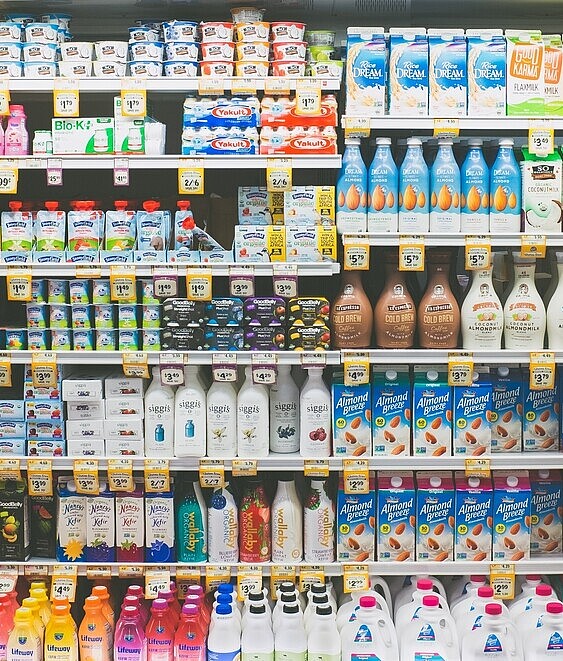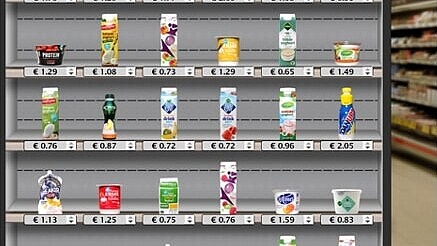

Article: Wednesday, 10 February 2021
Retail is a very competitive sector with razor-thin margins; retailers are always looking out for ways to increase sales and improve customer satisfaction. Moving products around, point-of-sale material or even new subcategories – for example using ‘fluffy-coated cakes’ to group together products that were previously either children’s biscuits or large biscuits. Dr Robert Rooderkerk of Rotterdam School of Management, Erasmus University (RSM) looked into it when he was asked to advise retailers on how to increase the number of shoppers buying from a particular category without changing the composition of the product range. He worked with Prof. Donald Lehmann of Columbia Business School.
“Shelf planning is part of the broader field of assortment optimization, my area of expertise. It’s fascinating because it combines insights from marketing and psychology to understand how consumers perceive an assortment of products and how they make the decision to buy. It uses econometric techniques and optimization algorithms to model these decisions, and ultimately indicates the optimal way to display products on the shelves. I really like the combination of theory and advanced analytics at this intersection of marketing and operations.”
“The problem was introduced to me by a major biscuit manufacturer in the Netherlands that was asked for advice by a large Dutch grocery retailer on increasing category-level conversion – that is upping the percentage of shoppers in the store that buy from that category without changing the composition of the product assortment. That implied changing the shelf layout, and it seemed a very interesting research question. How could we change the layout – the arrangement of all products for sale in the category – so that consumers would perceive there was more variety, and/or experience less complexity of choice? Variety and complexity of choice are two likely drivers of conversion.
“I thought that finding a method to answer this question would greatly benefit retailers, manufacturers, and consumers.”

Shelf layouts that are better tailored to customers ensures customers can better appreciate the variety on offer without feeling overwhelmed by the complexity of the assortment.
“Shelf layouts that are better tailored to the way customers think ensures customers can better appreciate the variety on offer without feeling overwhelmed by the complexity of the assortment. This increases the chances they will buy, benefitting retailers and manufacturers, and increases the satisfaction with the chosen item, benefitting customers.”
“First, we constructed ways to measure how consumers mentally group products (the internal categorisation).” Dr Rooderkerk used a custom designed digital planogram tool in which participants were asked to construct their own shelf layout. He also used a sorting task, which asked consumers to make their own groups of products, both in a physical setting (a table with product cards) as online (organising digital product representations into groups).
“Second, we designed laboratory and field experiments in which we manipulated the external categorisation (the way products are grouped on the shelf) in addition to measuring the internal product categorisations.”
“We used various manipulations of the shelf layouts in a shopping task in which consumers had to choose from an assortment. Sometimes they had to choose something from that assortment, and in other instances they could choose to not buy from that assortment at all. Then we measured their perceptions of the assortment.
“The data allowed to us to see whether the categorisation congruency – the match between internal and external categorisation – affected purchase behaviour, and to what extent the underlying process could be explained by the consumers’ perceptions of the assortment.
“Finally, we attempted to leverage this knowledge by optimising the external categorisation; that is finding a layout that would maximise the expected conversion – one that would actually increase the percentage of shoppers in the store that buy from that category.”
One of the challenges in the laboratory experiments was to construct a balanced set of product stimuli, containing equal frequencies of brands, types, and volume. To do this, Dr Rooderkerk hand-coded 200 different types of yoghurt snacks from different supermarket chains, then used a custom optimization routine to find the best set of 36 products. “My student assistant went out and bought all the products. I drove them to Amsterdam to have them digitized so they could be included on virtual shelf layouts (see picture).”

“First, we found that the way that consumers internally categorize products varies a lot, and these categorizations cannot really be explained by observed product attributes, including the ones deemed important by the participants such as the brand, type or size of the packaged product.”
“Second, we found that the match between internal and external categorization (we call this the categorization congruency) consistently positively affects both the consumers’ intention to purchase, and customer satisfaction. Much of this effect can be explained by the way internal and external categorizations affect the consumers’ perceptions of the assortment. When there’s a match between the consumers’ internal categorization and the products’ external categorization, this increases the consumers’ perception of variety and decreases their perception of complexity.
“Finally, we found that the insights from our experiments are easy for shops to put into action. Optimizing the shelf layout was shown to lead to a substantial increase in expected conversion compared to the traditional approach that is based on a consumer decision tree.”
Dr Rooderkerk and Prof. Donald Lehmann’s optimization results for biscuits suggested that shops could use more subcategories; in fact they recommended a new subcategory, ‘fluffy-coated cakes’, which grouped together some of products that the retailer had originally organized under two categories, of children’s biscuits and large biscuits.
“Retail is a very competitive industry with razor-thin margins. Our insights and methods hold great promise for improving margins by optimizing the shelf layout based on the way consumers categorize products. The way that retailers plan the size and composition of their assortment have traditionally received more attention for increasing sales. We show the value of focusing on a third dimension, the layout.”
“We gave the results of our experiments to the Dutch biscuit manufacturer that introduced the problem, and to other retailers and manufacturers, and I think they will find it valuable for the way they manage their product categories. We also co-operated with Ipsos NORM, a marketing research agency that helps retailers to optimise their shelf layouts. We used their virtual store environment, and in exchange, our insights will help them improve their methodology.
“The technological tools that we developed – such as the online planogram tool to ‘build your own shelf’ (implemented by Kevin de Kok of Kevelop) – has attracted some interest from companies interested in adopting it as part of their shelf planning research.”
We were surprised that optimizing the shelf layout based on our insights added value and increased sales compared to the traditional approach based on consumer decision trees.
“We had not expected that the effect would be much stronger in the field than it was in the laboratory. But then again, in the lab we used more balanced and stylized layouts for assortments, whereas the field experiments better represented the messy reality of different brands, flavours, and pack sizes occuring at very different frequencies.
“We also hadn’t expected the effect of product familiarity to vary between the field experiments and the laboratory experiments. In the field, familiarity makes the effect stronger and shifts the customers’ focus to the perception of variety. In the lab, there is no such effect. This may have been due to differences in the stimuli we used; there was a more complex category for biscuits in the field, and a less complex category of yoghurt snacks in the lab. Future research should dive into this phenomenon.
“And we were surprised that optimizing the shelf layout based on our insights added value and increased sales compared to the traditional approach based on consumer decision trees.”

The paper was published in the 2021 February issue of the Journal of Marketing Research (STAR) under the title Incorporating Consumer Product Categorizations into Shelf Layout Design.


Science Communication and Media Officer

Corporate Communications & PR Manager
Rotterdam School of Management, Erasmus University (RSM) is one of Europe’s top-ranked business schools. RSM provides ground-breaking research and education furthering excellence in all aspects of management and is based in the international port city of Rotterdam – a vital nexus of business, logistics and trade. RSM’s primary focus is on developing business leaders with international careers who can become a force for positive change by carrying their innovative mindset into a sustainable future. Our first-class range of bachelor, master, MBA, PhD and executive programmes encourage them to become to become critical, creative, caring and collaborative thinkers and doers.
